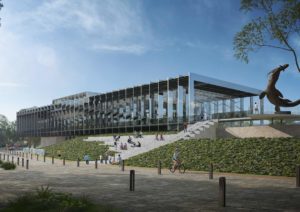An immersive environment to learn about Mexico's prehistoric era.
Mexico City is one of the largest, densest cities in the world. At the center of this vast urban metropolis lies el Bosque de Chapultepec (Chapultepec Park), one of the largest urban forests in the world. Often referred to as the lungs of the city, its trees rise hundreds of feet in the air, and somewhere underneath their canopy, lies the Museo de Historia Natural (Museum of Natural History).
At the heart of the building are nine expansive vaults, which provide a dramatic and colorful space for the most magnificent objects from the museum’s collection. The relationship between the open space and the iconic prehistoric animals and fossils provides an engaging environment to promote learning and culture.
The fossils, suspended in the vast vaulted ceilings, provide an immersive and colorful environment.
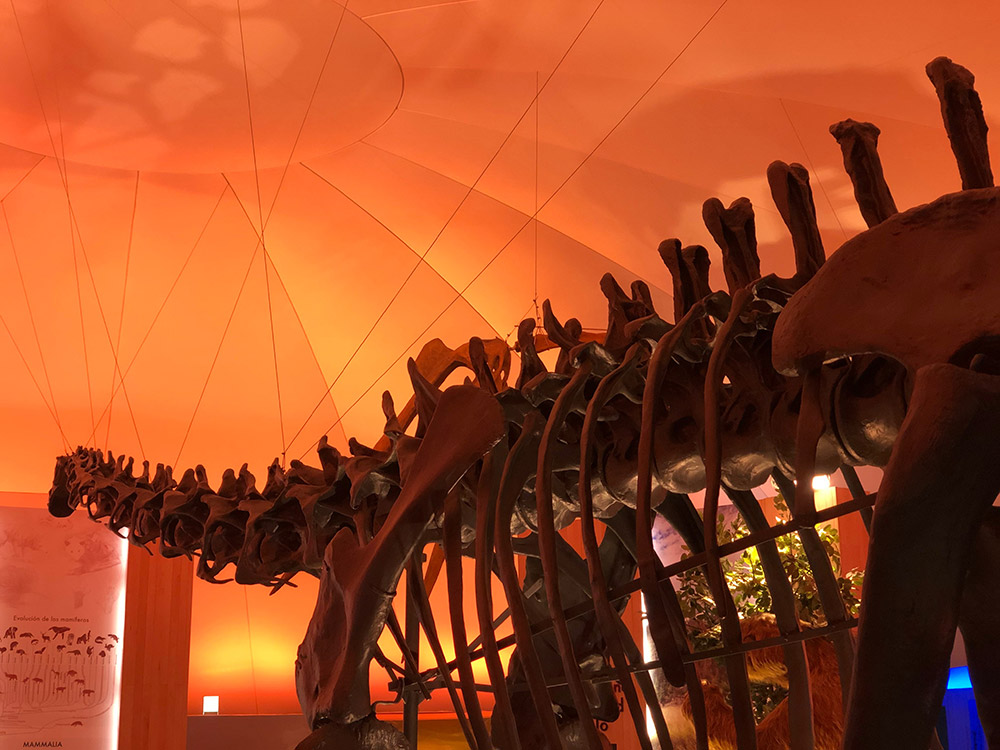
The vaulted ceiling
For the first time in fifty years, the Natural History Museum in Mexico City is going through a renovation, planned in two phases. This phase was completed in 2018, while the second phase has a planned completion date in 2023.
At the heart of the building are four generous new vaults, which provide a dramatic and colorful space for the most significant objects from the museum’s collection. The relationship between the open space and the iconic prehistoric animals and fossils provides an entertaining environment to promote learning and culture. The fossils are suspended on the wide vaulted ceilings providing an immersive and colorful environment.
Design Challenge
We inherited the legacy, iconic design, a series of convex and concave structures that, while beautiful, had limitations to the vision of the future utility.
The emergence of technological advances like CGI (Computer Generated Images), VR (Virtual Reality), and AR (Augmented Reality) to name a few, have created a representational challenge for museums of this kind; how to render the magnitude of dinosaurs in an authentic and meaningful manner.
Solving Problems
Changes to lighting, services corridors, and the concrete shells were necessary to deliver the required aesthetic, acoustic, and thermal visitor experience.

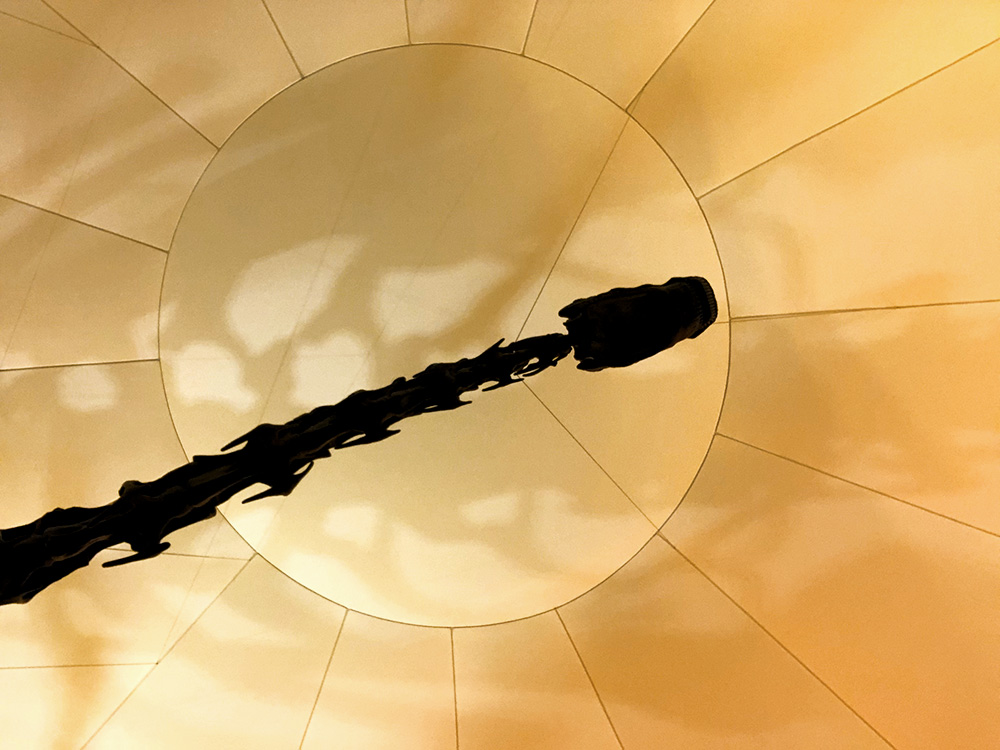
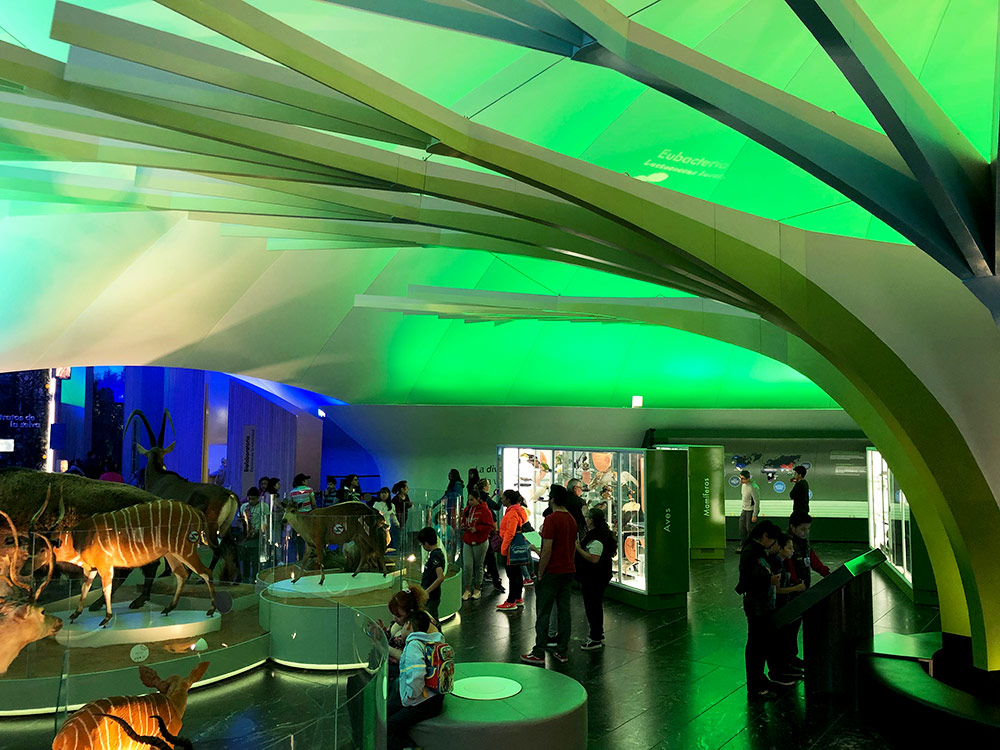

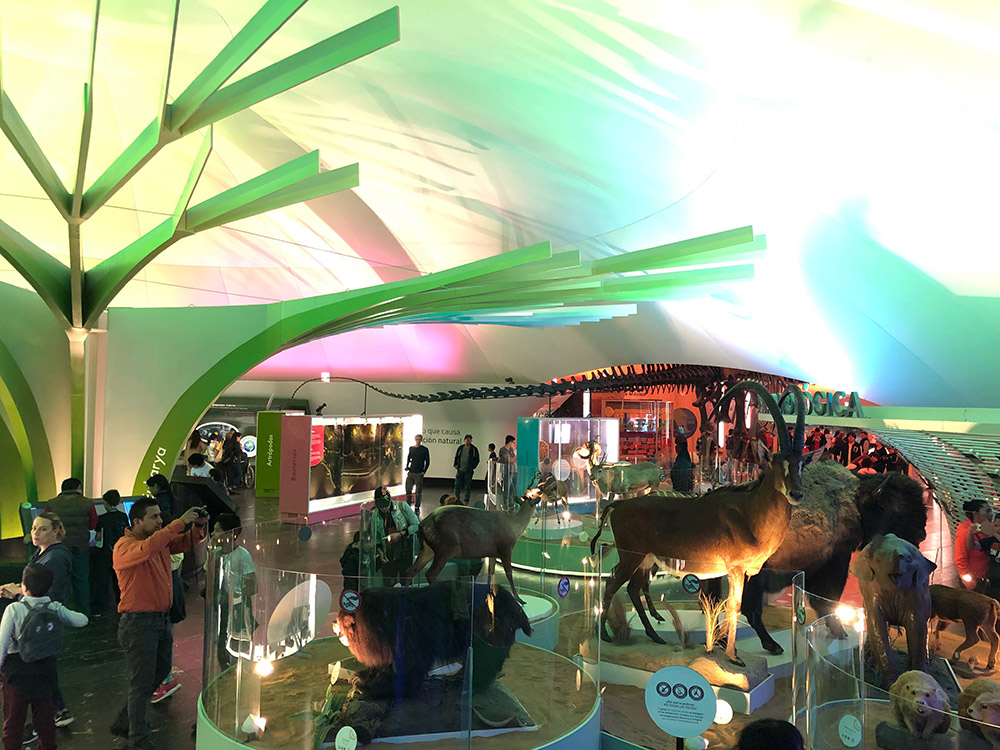

Previous
Next
Facts & Figures
Client
Natural History Museum Escrow
Status
Completion 2018
Location
Mexico City
Area
4,000 m² / 43,056 ft²
Design
Studiometria
Arditti + RDT Architects
Gantous Arquitectos
Program
Architectural Design and Construction Supervision
Lead Architect
Jorge Arditti
Arturo Arditti
Ricardo Umansky
Claudio Gantous
Christian Gantous
Museography
Sietecolores
Photography
Jorge Arditti
Renders
Decc
